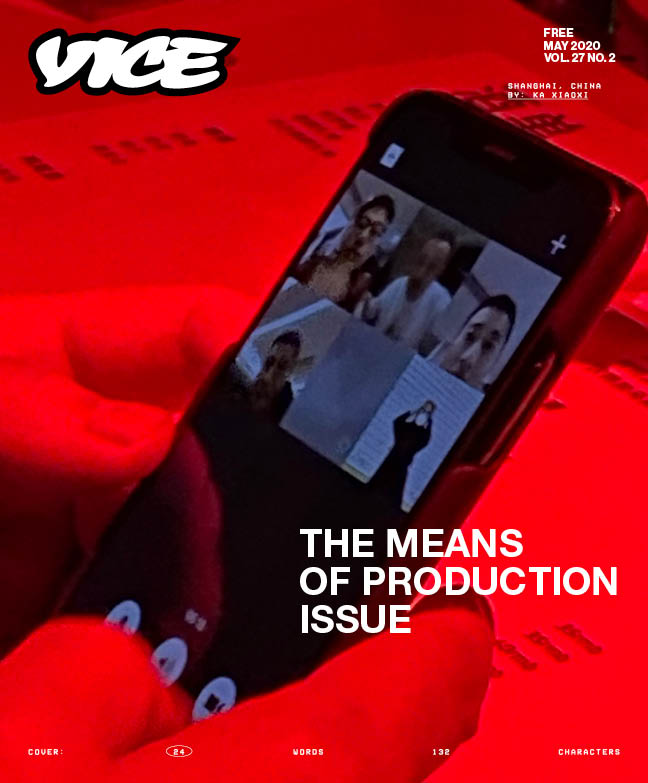WEEK 3 – ANALYSIS – TASK 2 – VICE – MEANS OF PRODUCTION ISSUE
VICE – MEANS OF PRODUCTION ISSUE
Another field of research recommended to me from my tutors based on my research was to explore the idea of the change in process due to the Covid-19 pandemic. This worldwide pandemic has changed every aspect of our lives forever, however even if I were to focus on just the creative impacts (and restrictions) that the coronavirus has had, I could discuss it forcer in so much depth. Therefore, I thought it would be wise to investigate at least a few different elements on how life has changed; there’s no point ignoring this pandemic within my university work, I’ve had to adapt and overcome in every other area of my life so I still need to understand the creative impacts this would have. Everything from the limited research that I can’t get from exhibitions and galleries closing, to the lack of resources around, the new ways of presentation; online exhibitions and the future of curation as well as the emotional affects, the increased deaths, the dystopian world, face masks covering our identity– it’s unfortunately so inspiring to research into in an overwhelming way.
Magazines had been affected greatly by this pandemic in every aspect of the production, if I am going to create a magazine, which is a possibility, I would need to do some extensive research on how magazines have changed and adapted in line with what is going on in the world. Therefore, this led me to another magazine which I love gaining inspiration and reading from which is Vice. And what was particularly interesting was that this issue was conceived before the pandemic but constructed during it and therefore different to the other issues as this was the peak of having to adapt extremely quickly to what was happening.
“Editorially, every piece that was in the works required reconsidering—would we kill it? Re-report it? Expand it? Cut it down?”
This quote from the Editor’s Letter of Vice’s Means of Production issue explains the emotion and panic within the creative industries in terms of bringing out a new issue of Vice; I am sure my teachers felt the same sort of emotions when sorting out our modules with this pandemic being put in place too. It brings me back to the feeling of March where everything was scary and uncertain, the lack of motivation and mental affects relating to creativity and feeling defeated comes back.


“We used archival images instead of sending photographers into the field and added annotations to stories. We designed the issue to emphasize the building blocks that make up any typical magazine you might read, but this time made them visible, not hidden. We have also made the whole issue available for you to read as a PDF,”
This quote explains the adaptation that VICE as a team have had to go through in order to get their issue out to their customers in time, while still being accessible during a global pandemic. They have had to change the way they gain their imagery and content as well as the means of presentation. Me and my tutors had a discussion to show that online exhibitions, PDF’s being made more frequently as well as other adaptations for accessibility during this pandemic allow more people of minorities to reach the content. This is because online exhibitions, PDFs of magazines and online content including apps are less in price compared to print versions, use up less paper and energy of the planet and also allow people who are disabled to access art more effectively. It is interesting that it has taken a pandemic for disabled people to have better access to the arts industry but hopefully more people are aware of these sort of issues and in the future there could be more consideration from the larger companies.
